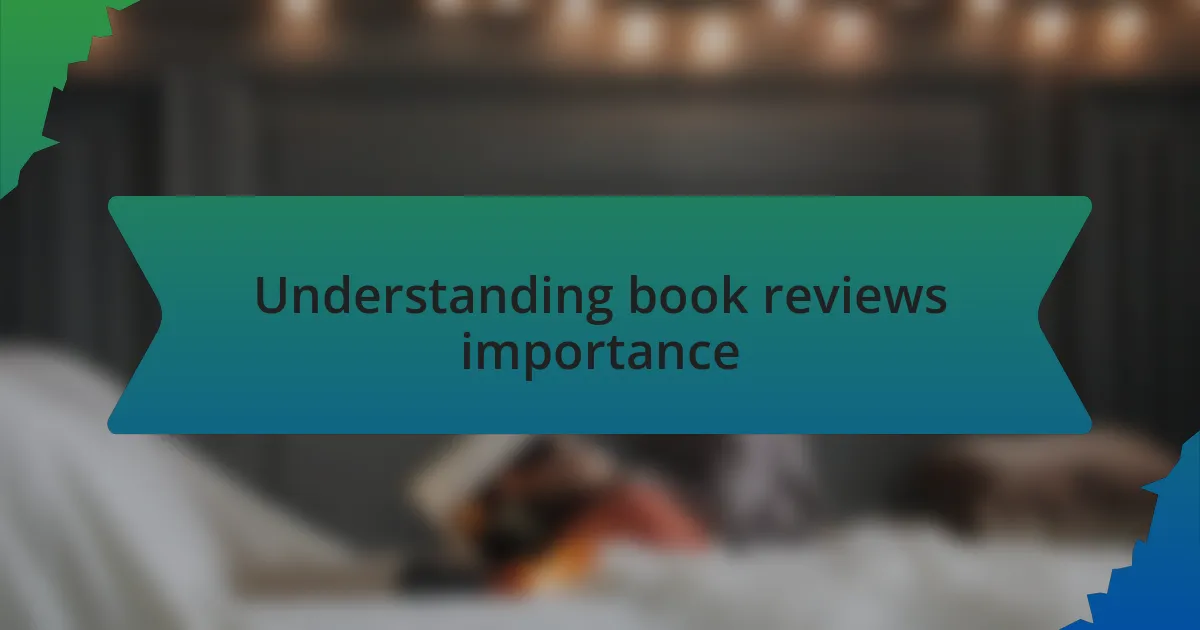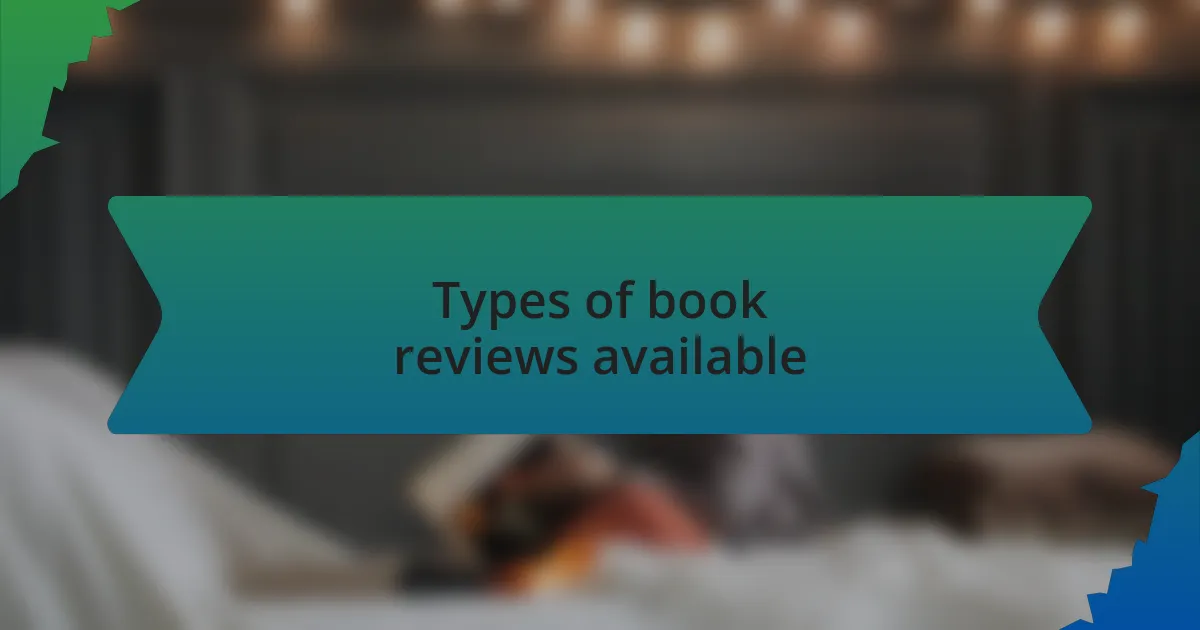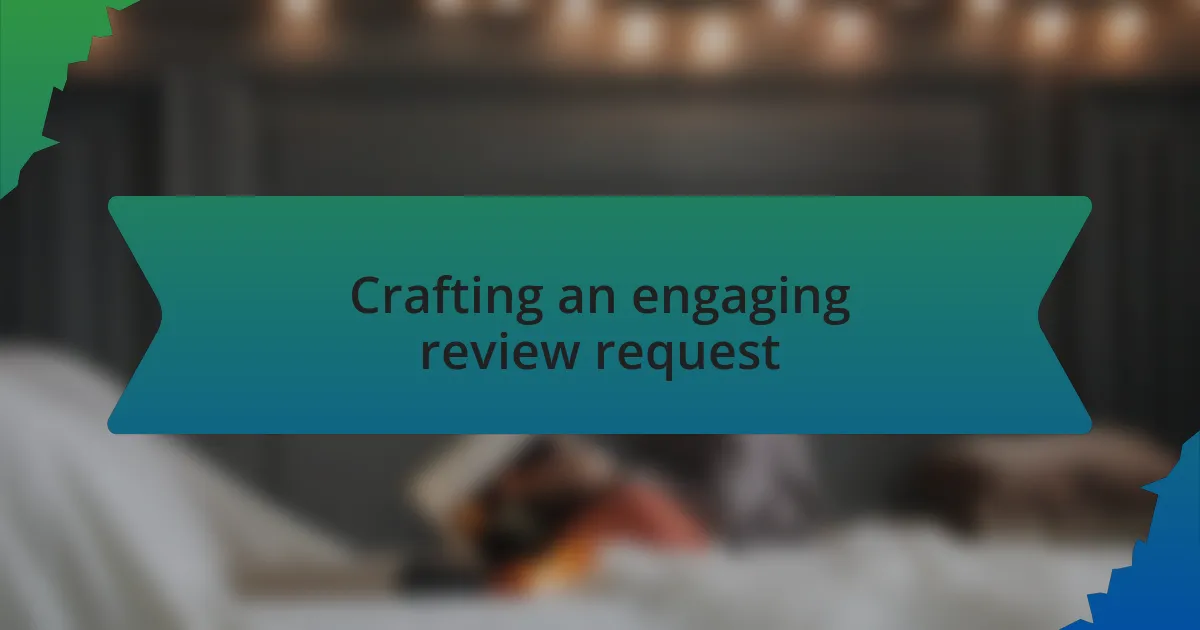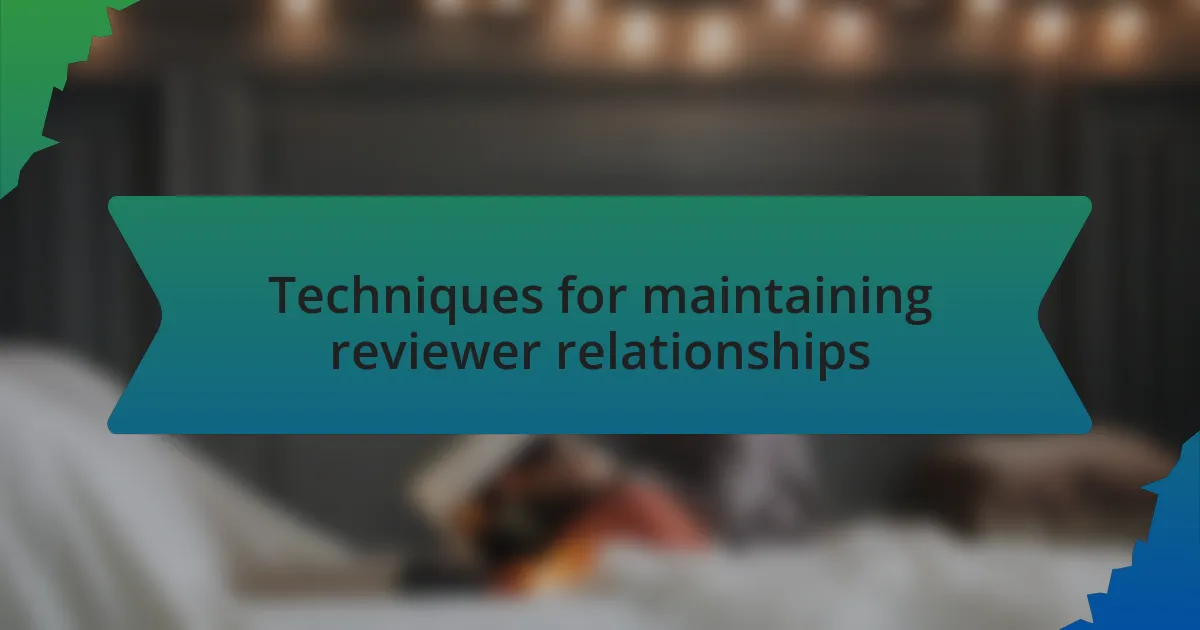Key takeaways:
- Book reviews help readers navigate literature, build trust, and enhance the visibility of independent authors.
- Different types of reviews (professional, reader, blogger) serve varied purposes, influencing reader choices differently.
- Engaging review requests entail enthusiasm, personalization, clarity, and gratitude to foster positive connections with reviewers.
- Maintaining reviewer relationships involves regular communication, sharing writing updates, and engaging with their content to build community.

Understanding book reviews importance
Book reviews serve as a beacon for readers navigating the vast sea of literature. I remember a time when I was overwhelmed by choices at a local bookstore. A few insightful reviews helped me discover hidden gems I may have otherwise overlooked, proving just how pivotal these critiques can be.
The power of a well-written review goes beyond mere opinions; it builds trust within the reading community. When I see a book with numerous positive reviews, I’m often convinced to pick it up. Have you ever felt that spark of excitement when a reviewer perfectly describes a plot twist or character that resonates with you? It creates anticipation and connection, transforming the act of choosing a book into something more intimate.
Furthermore, for independent authors like myself, reviews can significantly influence visibility and sales. I once had a book that received a handful of thoughtful reviews, and I noticed a marked increase in downloads. Isn’t it fascinating how just a few words from readers can amplify our voices and ensure our stories reach others who need them?

Types of book reviews available
There are several types of book reviews available, each serving a unique purpose and audience. One type I often come across is the professional review, typically published in literary journals or magazines. These reviews tend to be comprehensive and analytical, offering deep insights into themes, character development, and writing style. I remember reading a professional review of a debut novelist that praised their intricate narrative structure; it made me appreciate the book on a whole new level.
Then, there are reader reviews found on platforms like Goodreads or Amazon. These reviews are often more personal and varied in opinion. I’ve noticed how these can be a mixed bag—they range from deeply emotional reflections on how a book impacted a reader’s life to brief comments that merely express enjoyment. I tend to find myself gravitating towards reviews where readers share their emotional journeys; they resonate with me and often guide my choices in what to read next. Don’t you find it interesting how personal experiences can influence perceptions of a book?
Lastly, we can’t overlook blogger reviews, which have gained popularity in our digital age. Often, these reviews reflect the blogger’s unique voice and style, offering a more casual and relatable take. I recall stumbling upon a book blog where the reviewer’s enthusiasm was infectious; it convinced me to pick up a book I wouldn’t normally consider. Isn’t it amazing how the passion of a single individual can ignite interest in a title, making it feel like a shared adventure between readers?

Crafting an engaging review request
When crafting an engaging review request, it’s vital to convey genuine enthusiasm for the book. I’ve found that a personalized touch, such as mentioning specific aspects of the reviewer’s previous work, can make a significant difference. For instance, I once reached out to a reviewer whose passion for character-driven narratives echoed my own, and it sparked a delightful conversation that led to them embracing my book enthusiastically.
Clarity is another key component in a review request. I remember sending a request that succinctly outlined what readers can expect from my book while hinting at the deeper themes I hoped would resonate. By posing open-ended questions—like, “What do you think about the way love is portrayed in modern relationships?”—I not only invited engagement but also made the reviewer curious enough to dive into my work.
Lastly, don’t underestimate the power of gratitude. A simple acknowledgment that you appreciate the time and effort a reviewer puts into reading and reflecting on your book can create warmth. Once, I included a heartfelt thank-you note in my request, and that small gesture delighted the reviewer. Have you ever felt more inclined to assist someone just because they showed appreciation? It’s a reminder that connection, after all, is at the heart of engaging requests.

Techniques for maintaining reviewer relationships
Building and maintaining strong relationships with reviewers is crucial in the independent publishing world. Regular check-ins can go a long way; I often follow up with reviewers to see how they’ve been and what they’re currently reading. During one such conversation, a reviewer shared their recent struggles with finding the time to read, which deepened our connection and led to more candid discussions about my work.
I’ve learned that sharing updates about my writing journey can also strengthen these bonds. When I recently completed a new manuscript, I remembered the reviewers who had been particularly supportive, and I sent them a sneak peek. This gesture not only kept them in the loop but also made them feel valued as part of my creative process. Isn’t it rewarding to know that someone genuinely cares about your journey?
Additionally, I always make it a point to engage with their content. I’ll share their reviews on social media or leave thoughtful comments on their blogs. By doing this, I’m not just acknowledging their work, but also fostering a sense of community. It’s so rewarding when reviewers reciprocate this engagement. Have you noticed how these little acts can create lasting relationships in a world where genuine connections are often hard to find?